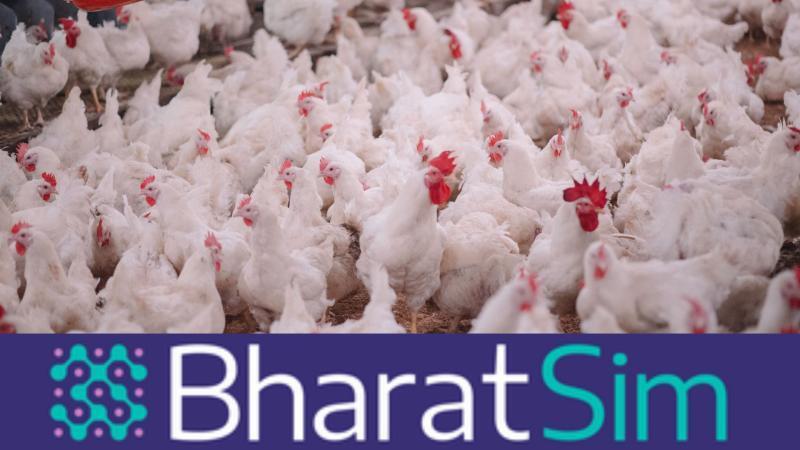
Computer model simulates bird flu outbreak in India
The threat of a bird flu pandemic has been a pressing concern for global health authorities in recent years. With the rise of highly pathogenic avian influenza (HPAI) viruses such as H5N1, the risk of transmission to humans has increased significantly. In India, where poultry farming is a significant industry, the potential for an outbreak is particularly high. To better understand the dynamics of a bird flu outbreak and identify effective strategies for containment, researchers have developed a computer model to simulate the spread of the virus in the country.
Using a computational model called BharatSim, researchers simulated an H5N1 outbreak in the state of Tamil Nadu, which has a large poultry population. The model took into account various factors such as the movement of people, animals, and goods, as well as the timing and effectiveness of interventions such as culling and quarantine. The study found that timing is critical in preventing the spread of the virus from birds to humans. Early culling of infected birds was shown to be effective in reducing the risk of transmission, but only if done promptly.
However, the most effective method to stop human transmission and prevent a pandemic was found to be the immediate quarantine of infected households. This approach was shown to be more effective than culling alone, as it prevented the spread of the virus from person to person. The study highlights the importance of rapid response and targeted interventions in containing a bird flu outbreak.
The BharatSim model is a powerful tool for simulating the spread of infectious diseases in India. By taking into account the complex dynamics of human and animal movement, as well as the social and economic factors that influence behavior, the model can provide valuable insights into the potential spread of a disease and the effectiveness of different interventions. The study’s findings have significant implications for public health policy and practice, particularly in regions with high-risk poultry farming practices.
One of the key challenges in containing a bird flu outbreak is the difficulty in detecting the virus early. The symptoms of bird flu in humans can be similar to those of other respiratory illnesses, making it hard to identify cases quickly. Additionally, the virus can spread rapidly through poultry populations, making it essential to have a robust surveillance system in place. The study’s findings emphasize the need for rapid and effective response mechanisms to be in place, including swift culling of infected birds and quarantine of infected households.
The study also highlights the importance of public awareness and education in preventing the spread of bird flu. In India, where many people keep backyard chickens or engage in small-scale poultry farming, the risk of transmission is higher. Educating the public about the risks of bird flu and the importance of proper handling and hygiene practices can help reduce the spread of the virus.
In conclusion, the study’s findings demonstrate the critical role of timing and targeted interventions in containing a bird flu outbreak. The use of computational models such as BharatSim can provide valuable insights into the dynamics of disease spread and the effectiveness of different interventions. As the threat of a bird flu pandemic continues to loom, it is essential that public health authorities and policymakers take heed of these findings and develop effective strategies for rapid response and containment.
The study’s results have significant implications for India, where the poultry industry is a significant contributor to the economy. The government and public health authorities must work together to develop and implement effective surveillance and response mechanisms to prevent the spread of bird flu. This includes investing in robust surveillance systems, developing rapid response protocols, and educating the public about the risks of bird flu and the importance of proper hygiene practices.
Ultimately, containing a bird flu pandemic requires a multi-faceted approach that involves government, public health authorities, and the general public. By working together and using cutting-edge tools such as computational models, we can reduce the risk of a pandemic and protect human and animal health.






